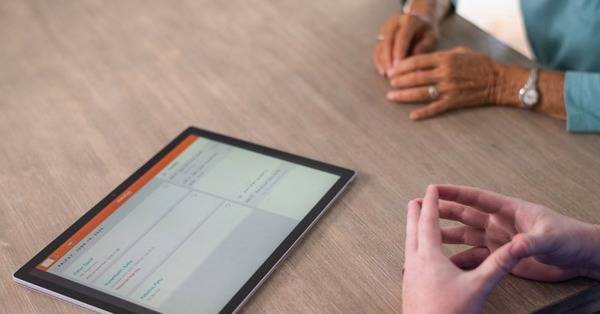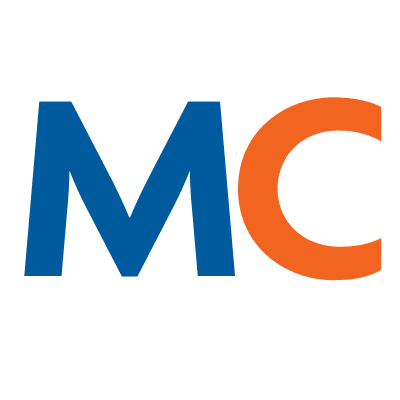- Solutions
- Solutions
- Home Health
- Hospice
- Life Plan Community
- Palliative Care
- Private Duty
- Senior Living
- Skilled Nursing
- Skilled Nursing
- Skilled Nursing Software
- Advanced Insights
- Customer relationship management
- Data and analytics
- Financial & operations management
- Marketing
- Nutrition management
- Referral management
- Regulatory compliance
- Retail management
- Resident engagement
- Revenue cycle management
- Skilled nursing interoperability
- Partners
- Blogs
- Resources
- About
- User Conference

How interoperability will drive the shift to patient-centric care in senior living
There’s no doubt that the future of healthcare is all about patient-centric care. Providers will be expected to have the data and context they need to make sure patients and residents receive high quality, seamless care, especially when moving from one care setting to another.
The key to delivering the seamless care patients and their families expect will be interoperable systems: the ability for caregivers to share patient and resident records from all the places where they’ve received care, whether that’s a hospital, clinic, or a skilled nursing facility. However, in discussions about interoperability standards going back a decade or more, senior living and long-term care providers have not been well represented. This means many skilled nursing and senior living providers are still catching up on implementing interoperable solutions.
Why interoperability matters
It’s important for facility-based providers to understand how interop can benefit their residents and patients as well as their business. To help with this, MatrixCare has been conducting a survey to highlight how referral partners see the importance of interoperable solutions and how those perspectives affect long-term care providers. In our most recent survey, there was one especially notable finding: 99% of referral sources said they will switch who they send patients to based on ease of interoperability. This shows how vital it is for senior living and long-term care providers to consider adopting interoperable technology to maintain healthy partnerships with several stakeholders.
- Referral partners need the ability to access care records from other care settings or providers. They also want to be able to check the progress of the patients they’ve referred without time-consuming phone calls or faxes. But it’s important to point out that interoperability with referral partners benefits the provider, too. When all the data from various systems can be accessed in one place, it can dramatically streamline the admissions process for new patients and residents, speed up the development of care plans and the delivery of care.
- Interoperable systems also make communication between clinicians—both within the same facility and across different care settings—easier, faster and more accurate. Interoperability can support real-time updates for everyone involved in patient or resident care, so they know what’s happening with any emerging issues or have visibility into progress being made. Making it easier to access complete information and making sure information follows the patient helps avoid poor patient care and family dissatisfaction.
In addition, we have case studies showing that interoperability enhances clinician satisfaction. Having the right information about the patients and residents they care for, with no blind spots, saves clinicians time and allows them to work efficiently, which promotes work/life balance. Adopting interoperable technology can help make your facility a place that people want to work, which can be a powerful advantage when labor markets are as challenging as they are now.
- Since the pandemic, patients or residents and their family members have adopted a more consumer-oriented attitude toward their healthcare providers, and they have also become more tech savvy. Technology including telehealth appointments, applications for tracking prescriptions, and easy access to health records have become expected. So it makes sense that patients and residents will look for the same kind of patient-centric experience when interacting with post-acute care providers. Interoperable systems make it easier to keep everyone up to date with care plans, a patient’s progress, changes in medications and other crucial information.
And even in resident-based care settings like assisted living, we’re seeing more interactions with providers traditionally thought of as post-acute. For example, home health patients and senior living residents may interact with hospice providers, which means connections to information from other post-acute care settings will be key.
- From a payor perspective, interoperable systems generally make it easier to get complete data and documentation. As the use of artificial intelligence (AI) and machine learning in healthcare increases, it’s important to remember that any analytic solutions are only as good as the data they’re fed. If care records are incomplete and patient data is scattered across different EHRs and care settings, that hinders the ability to make sense of all the discrete information.
When complete records and data flow to the right person and the right point in the workflow using the power of interoperability, that’s what we mean at MatrixCare when we say we’re “more than an EHR.”
How MatrixCare is supporting broader adoption of interoperability
MatrixCare has been committed to advocating for interoperability in post-acute care for years. We’ve been active with the CommonWell Health Alliance and the Post-Acute Care Interoperability (PACIO) workgroup, to advocate for the adoption of interoperable technology in new use cases and challenging workflows. We’ve been involved in the development of the Trusted Exchange Framework and Common Agreement (TEFCA), which established policies and technical specifications for nationwide interoperability. We’ve conducted annual surveys with post-acute providers and referral partners to better understand perceptions of interoperable technology and how it can help caregivers, patients and residents. Soon, we’ll roll out new features and functions in our core skilled nursing EHR that will improve the ability of our customers to access care records from referral sources and other care settings and providers they work with.
What’s next
Looking ahead, I believe we’ll see more investment in bringing healthcare records together and standardizing the data that’s included in those records. AI and machine learning are already helping create intelligent use cases and alerts that will allow clinicians to deliver better care, and there’s little doubt more applications will surface over time.
Interoperability is good for patients and residents, for referral sources, for your clinicians, for patient family members—and for your facility’s bottom line. MatrixCare is committed to delivering interoperable technology solutions that let you focus on delivering the best care for your patients and residents while helping keep your business healthy and thriving.
Request a demo today for a closer look at MatrixCare.
See what MatrixCare can do for you
Nick Knowlton
Nick Knowlton is the Vice President of Strategic Initiatives for ResMed, parent company of Brightree and MatrixCare. He leads the company’s interoperability initiatives, amongst other areas. Nick brings more than 20 years of business experience across sales, marketing, product and strategy roles for technology and health information technology businesses. Prior to joining the ResMed family of brands, Nick ran strategic initiatives for Greenway Health, a market leader in the physician practice EHR space.
Nick is extremely active in the post-acute industry -- he is the chair of the board of directors of CommonWell Health Alliance and is on the board of HCTAA and PDHCA, which are affiliates of NAHC.
Nick has a Bachelor of Science degree with a major in Biochemistry from the University of Notre Dame.
Related Posts




See MatrixCare in action
Start by having a call with one of our experts to see our platform in action.
MatrixCare offers industry-leading software solutions. Thousands of facility-based and home-based care organizations trust us to help them improve efficiency and provide exceptional care.
© 2025 MatrixCare is a registered trademark of MatrixCare. All rights reserved.




